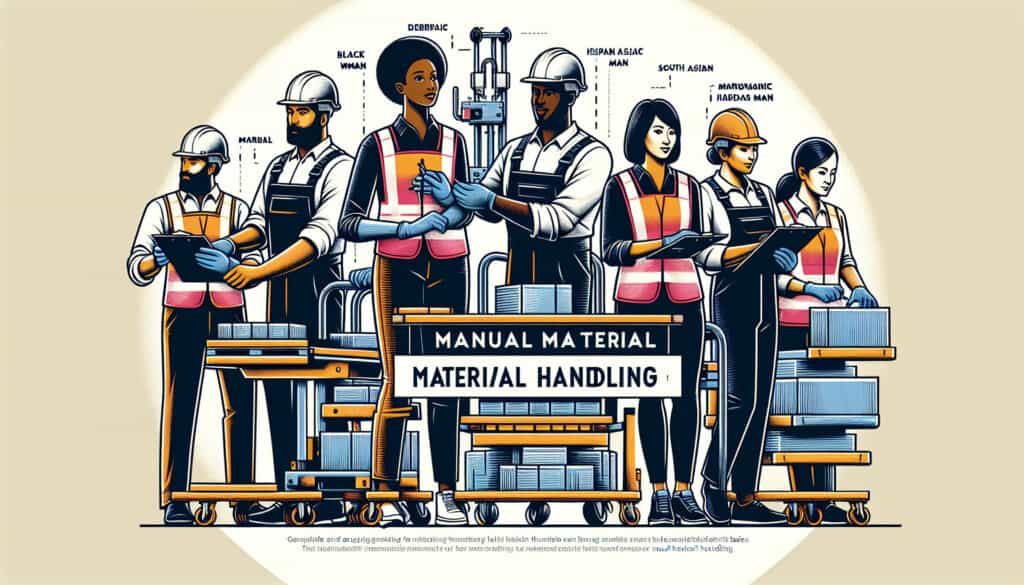To determine the maximum acceptable weights and forces for manual handling tasks.
- Méthodologies : Ingénierie, Qualité
Tables manuelles de manutention Liberty Mutual (Tables Snook)

Tables manuelles de manutention Liberty Mutual (Tables Snook)
- Amélioration continue, Ergonomie, Facteurs humains, Ingénierie des facteurs humains (HFE), Production allégée, Amélioration des processus, Gestion de la qualité, Gestion des risques, Safety
Objectif :
Comment il est utilisé :
- A set of tables that provide guidance on the maximum acceptable weights and forces for lifting, lowering, pushing, pulling, and carrying tasks. They are based on psychophysical data and are widely used in ergonomics to design safe manual handling tasks.
Avantages
- Provides a scientific basis for designing safe manual handling tasks; Widely accepted and used in industry.
Inconvénients
- Can be complex to use and interpret; May not be applicable to all situations.
Catégories :
- Ergonomie, Gestion des risques
Idéal pour :
- Designing safe manual handling tasks to reduce the risk of musculoskeletal disorders.
The Liberty Mutual Manual Material Handling Tables, often referred to as Snook Tables, provide a standardized approach to assessing and mitigating risks associated with manual handling tasks. These tables derive their recommendations from psychophysical research, which examines human capabilities and limitations in the context of lifting, lowering, pushing, pulling, and carrying objects. Common applications include workplace ergonomics assessments across various industries such as manufacturing, warehousing, healthcare, and construction, where manual handling is prevalent. In project phases involving task design or risk assessment, ergonomists, health and safety professionals, and industrial engineers often utilize these tables to establish safe weight limits in manual handling tasks, thereby enhancing worker safety and productivity. The involvement of personnel from ressources humaines and occupational health is also crucial, as they can help implement training and develop policies based on the insights rendered from the tables. The primary advantage of employing the Snook Tables lies in their scientifically validated metrics, which provide objective guidance for developing safer handling procedures. This broad acceptance in industry not only helps companies comply with safety regulations but also supports initiatives aimed at reducing musculoskeletal disorders among employees. The application of these tables often leads organizations to s'engager in continuous improvements and reassessments of their manual handling protocols, ensuring long-term safety and efficiency in operational practices.
Principales étapes de cette méthodologie
- Identify the manual handling task and its specific requirements.
- Reference the Snook Tables to determine maximum acceptable weights and forces.
- Assess the postures and movements involved in the task.
- Evaluate the frequency and duration of the manual handling activity.
- Consider environmental factors, such as surface conditions and space constraints.
- Implement design modifications based on the analysis from the tables.
- Test the modified task for compliance with ergonomic standards.
- Monitor employee feedback and adjust the design as necessary.
Conseils de pro
- Integrate task-specific risk assessments with Snook Tables to account for individual worker characteristics like height and strength.
- Regularly update and validate lifting and carrying recommendations by consulting with recent ergonomic research and field studies.
- Utilize feedback loops from employees during task observations to refine and adapt manual handling guidelines for various job roles.
Lire et comparer plusieurs méthodologies, nous recommandons le
> Référentiel méthodologique étendu <
ainsi que plus de 400 autres méthodologies.
Vos commentaires sur cette méthodologie ou des informations supplémentaires sont les bienvenus sur le site web de la Commission européenne. section des commentaires ci-dessous ↓ , ainsi que toute idée ou lien en rapport avec l'ingénierie.
Contexte historique
1986
(si la date est inconnue ou n'est pas pertinente, par exemple "mécanique des fluides", une estimation arrondie de son émergence notable est fournie)

Articles Similaires
Calculateur de METS en calories
Méta-analyse
Cartographie des messages
Diagrammes du modèle mental
Forces de poussée et de traction maximales acceptables
Planification des besoins en matériaux (MRP)